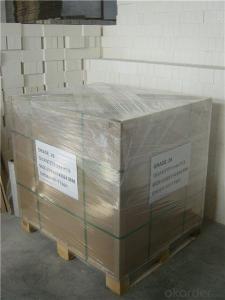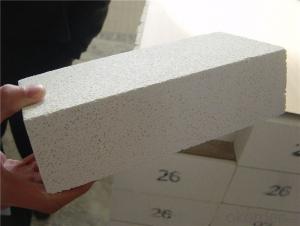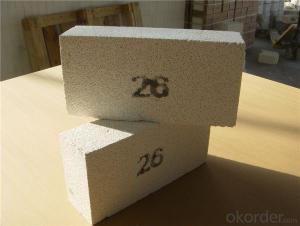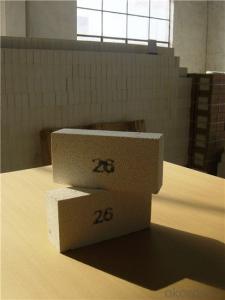Thermal Insulation Clay Refractory Brick Fire Clayinsulating Brick
- Loading Port:
- Shanghai
- Payment Terms:
- TT OR LC
- Min Order Qty:
- 1 m.t.
- Supply Capability:
- 1000 m.t./month
OKorder Service Pledge
OKorder Financial Service
You Might Also Like
Thermal Insulation Fire Clay Brick
Refractory brick is a block of refractory ceramic material used in lining furnaces, kilns, fireboxes, and fireplaces.
We provide high quality Refractory Fire Bricks that are used on wide range in the various industries like Cement, Glass and Steel. Refractory Fire Bricks are provided as per the quantity and specifications required by the customers. We provide an extensive range of Refractory Fire Bricks at reasonable prices that depend upon the quantity ordered.
Application
Insulating Fire Brick are used for the lining of converter, alternating current arc furnace, direct Current arc furnace and the ladle slag line, etc.
Company Advantage
(1)Long Insulating Fire Brick manufacture history: 25 years manufacturer
(2)Advanced equipment
(3)Diversification of production standards: ISO ANSI FEPA JIS ASTM
(4)Flexible payment: T/T L/C D/P D/A
(5)Professional marketing team and after-sale service
Insulating Fire Brick main feature:
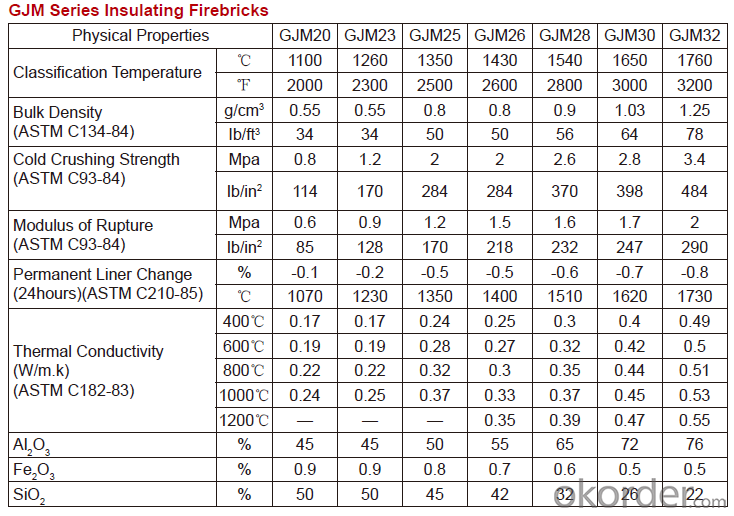
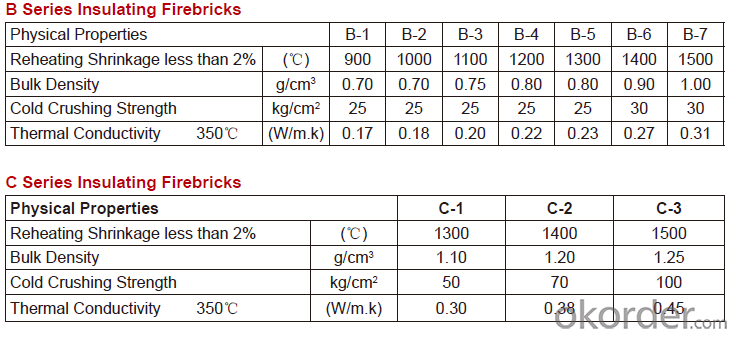
Equipment
1 unit of Ceramic Abrasive (SG Abrasive) pilot production line
2 units of Compact grain Abrasive pilot production lines
1 unit of high-end coated abrasives (abrasive cloth) production line
2 units of Boron Carbide production lines
3 large flexible crushing and sieving lines for grit production lines
6 units of 5000KVA-10000KVA dumping type electric arc furnaces for Brown Fused Alumina fusion
Q1 What’s the transport method?
A1 FCL delivery goods with wooden pallet or wooden case by sea; If LCL delivery, must with wooden case; Sometimes need open top, flat rack or bulk cargo.
Q2 What’s the required payment term?
A2 Generally 30% TT as the prepayment, 70% TT before delivery. If need, 100% Irrevocable Letter of Credit or negotiation.
Q3 Which country are our products exported to?
A3 Apart from entire Chinese market, the US, Russia, Japan, Korea, Australia and some Southeast Asian Nations.
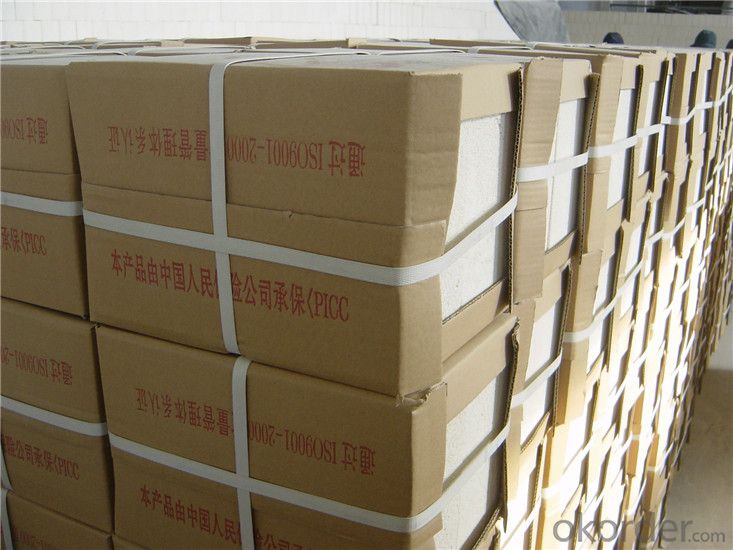

- Q:Can insulating fire bricks be used in the construction of hearth furnaces?
- Yes, insulating fire bricks can be used in the construction of hearth furnaces. These bricks are designed to withstand high temperatures and have excellent insulation properties, which makes them ideal for creating the lining of a hearth furnace. Their ability to retain heat and resist thermal shock helps in maintaining a stable and efficient heating environment in the furnace.
- Q:Can insulating fire bricks be used for insulation in smelters?
- Yes, insulating fire bricks can be used for insulation in smelters. Insulating fire bricks are designed to withstand high temperatures and provide excellent insulation properties, making them suitable for use in smelting operations where heat containment is crucial to optimize energy efficiency and protect the surrounding environment.
- Q:Material and making method of light insulating brick
- The strength products are made of high quality tabular corundum and mullite as aggregate, silicon carbide as matrix, additional special additive and a small amount of rare earth oxide to be mixed, and then formed by high pressure molding and high temperature sintering.
- Q:Are insulating fire bricks easy to clean?
- When it comes to cleanliness, insulating fire bricks have an advantage over other brick types. Their porous composition means they don't collect as much dirt or debris. To clean these bricks, simply use a soft brush or vacuum cleaner to remove loose dust or soot. For tougher stains or residues, a mild detergent solution can be used. Gently scrub and rinse the bricks afterwards. Be careful not to use harsh chemicals or abrasive materials that could harm the surface. With appropriate care and maintenance, insulating fire bricks can be cleaned with ease.
- Q:Can insulating fire bricks be recycled or reused?
- Yes, insulating fire bricks can be recycled or reused. Insulating fire bricks are made from various materials such as alumina, silica, and clay, which can be broken down and reused in the production of new bricks. Recycling these bricks involves crushing them into a fine powder and then mixing it with other raw materials to create new bricks. Reusing insulating fire bricks is also possible in certain applications. For example, if the bricks are still in good condition and have not been damaged, they can be removed from one structure and used in another. This reduces waste and saves resources. Overall, whether through recycling or reusing, insulating fire bricks can have a second life and contribute to a more sustainable and environmentally-friendly construction industry.
- Q:How do insulating fire bricks help reduce heat loss through convection?
- Insulating fire bricks help reduce heat loss through convection by trapping air within their porous structure. This trapped air acts as a barrier, preventing the transfer of heat through convection currents. The bricks' low thermal conductivity also minimizes the movement of heat, further reducing the loss through convection.
- Q:Can insulating fire bricks be used in contact with molten metals?
- Insulating fire bricks have the capability to be utilized alongside molten metals. These bricks are purposely crafted to endure high temperatures and possess exceptional insulating properties. They are commonly employed in situations where heat containment and distribution are necessary, such as kilns, furnaces, and industrial ovens. When confronted with molten metals, insulating fire bricks have the ability to withstand the intense heat and hinder the transfer of heat from the molten metal to the surrounding environment. This aids in upholding temperature stability and safeguarding the structural integrity of the equipment. Nevertheless, it is crucial to carefully select the precise type and composition of insulating fire bricks based on the temperature and the specific molten metal they will encounter. Different metals possess distinct melting points and can have diverse corrosive impacts on various materials. Consequently, it is advisable to seek guidance from experts or manufacturers to ensure the correct type of insulating fire bricks are chosen for each individual application.
- Q:Are insulating fire bricks resistant to moisture penetration?
- Yes, insulating fire bricks are resistant to moisture penetration. These bricks are designed to have low porosity, which means they have a very low water absorption rate. This characteristic makes them highly resistant to moisture penetration. Insulating fire bricks are commonly used in applications where they are exposed to high temperatures and harsh conditions, such as kilns, furnaces, and fireplaces. Their resistance to moisture penetration ensures their durability and effectiveness in these environments.
- Q:Can insulating fire bricks be used as a backup insulation material?
- Yes, insulating fire bricks can be used as a backup insulation material. Insulating fire bricks are designed to have low thermal conductivity, which means they are effective at reducing heat transfer. This makes them suitable for use as a backup insulation material in applications where maintaining temperature stability is crucial. They are commonly used in industrial furnaces, kilns, and other high-temperature environments where the primary insulation material may fail or need additional support. Insulating fire bricks can provide an extra layer of insulation, helping to prevent heat loss and improve energy efficiency. Additionally, they are durable and able to withstand high temperatures, making them a reliable choice for backup insulation.
- Q:Is it necessary to use mortar when installing insulating fire bricks?
- Yes, it is necessary to use mortar when installing insulating fire bricks. Mortar is a crucial component in the installation process as it helps to bond the bricks together, ensuring a tight and secure fit. It also helps to create a strong and durable structure that can withstand high temperatures. Without mortar, the bricks may not be properly secured and could shift or become loose, compromising the integrity of the installation. Additionally, mortar helps to fill in any gaps or spaces between the bricks, providing insulation and preventing heat loss. Therefore, using mortar is essential for a successful and effective installation of insulating fire bricks.
1. Manufacturer Overview |
|
|---|---|
| Location | |
| Year Established | |
| Annual Output Value | |
| Main Markets | |
| Company Certifications | |
2. Manufacturer Certificates |
|
|---|---|
| a) Certification Name | |
| Range | |
| Reference | |
| Validity Period | |
3. Manufacturer Capability |
|
|---|---|
| a)Trade Capacity | |
| Nearest Port | |
| Export Percentage | |
| No.of Employees in Trade Department | |
| Language Spoken: | |
| b)Factory Information | |
| Factory Size: | |
| No. of Production Lines | |
| Contract Manufacturing | |
| Product Price Range | |
Send your message to us
Thermal Insulation Clay Refractory Brick Fire Clayinsulating Brick
- Loading Port:
- Shanghai
- Payment Terms:
- TT OR LC
- Min Order Qty:
- 1 m.t.
- Supply Capability:
- 1000 m.t./month
OKorder Service Pledge
OKorder Financial Service
Similar products
New products
Hot products
Related keywords
